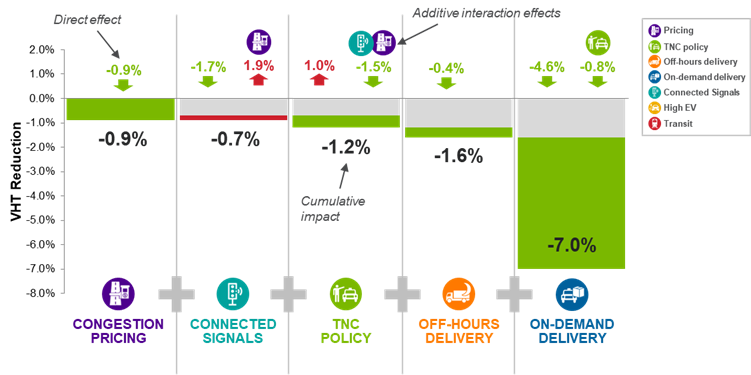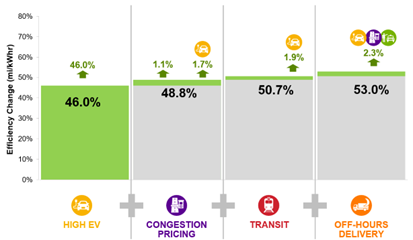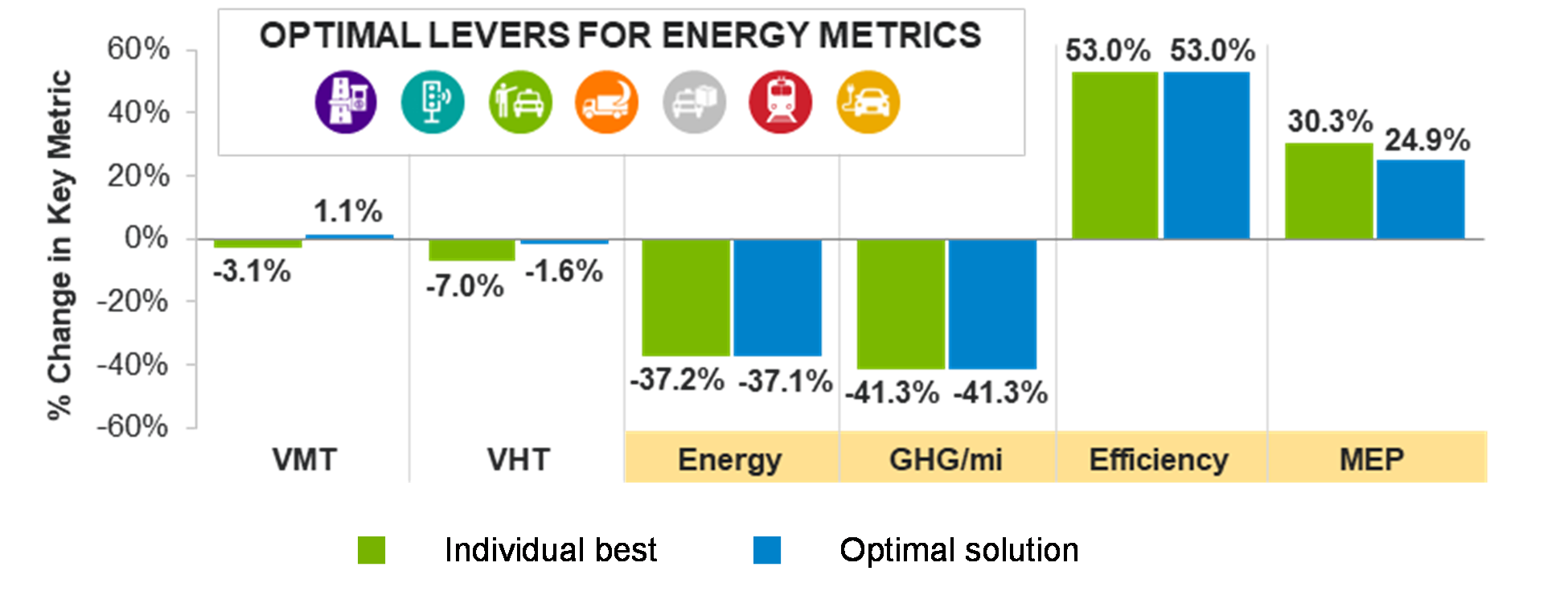Technology and Policies Impacts in Chicago
Understanding Interactions of Transportation Supply, Technologies and Policies Key to Achieving Transportation Goals
Many vehicle technologies and policies are currently being considered as safe, effective, affordable, and sustainable solutions to existing and emerging transportation decarbonization challenges. Argonne researchers have completed a first-of-a-kind large-scale study to identify optimum technology and policy combinations to meet unique mobility, energy, equity, and other goals.
The study used Argonne’s POLARIS tool, which implements advanced travel and freight demand modeling, dynamic traffic assignment, and transportation simulation into an integrated modeling platform. After consulting with local stakeholders, researchers looked at the mobility and energy outcomes of applying combinations of the following to the POLARIS Chicago Metropolitan area model:
Supply levers
- Congestion pricing
- Transit investments
- Connected signals
- Ride-sharing controls and first-mile-last-mile access
- Deliveries shifted to off-hours
Demand levers
- Higher telecommuting rate
- Availability of vehicle technology (connectivity and automation)
- Increased volume of e-commerce and on-demand delivery services
- Higher rates of vehicle electrification leading to varying charging demand.
Mobility
A multivariate analysis showed that policies related to off-hour delivery, e-commerce, and on-demand delivery volume help reduce vehicle hours traveled (VHT). E-commerce and on-demand delivery had the highest impact with 4.6% reduction, as a result of replacing individual shopping trips with optimized deliveries.
 Figure: Optimum Combination for Mobility
Figure: Optimum Combination for Mobility
Importantly, the optimal outcome of 7% reduction in system travel time could not be achieved without some levers that have negative impacts. These levers can have negative impacts on their own, such as the ridesharing policy, or in combination, such as connected signals and congestion pricing. Complex interdependencies between technology, policy and operations drive the need for system-level modeling and analysis.
Energy & System Efficiency
When considering energy consumption as the prime metric, the optimum outcome was achieved through a combination of vehicle electrification, congestion pricing, transit and off-hours delivery. While introducing electric vehicles contributed most (46%) of the energy efficiency change, the other solutions combined to add 7%. This demonstrates the importance of cooperative transportation systems and mobility solutions to achieving decarbonization goals.
 Figure: Optimum Combination for Energy
Figure: Optimum Combination for Energy
Stakeholder Takeaway
The large-scale study demonstrates the critical need to understand the interactions between different technologies and policies. Researchers were able to explore each outcome metric and develop an optimization framework to select scenarios that balance varying priorities. For example, selecting levers solely focused on energy would lead to a slight decrease in VHT but increase vehicle miles travelled (VMT).
 Figure: Impact on all Metrics when Optimizing Energy
Figure: Impact on all Metrics when Optimizing Energy
Refer to the following paper for more details:
Auld, J., Cook, J., Gurumurthy, K.M., Khan, N., Mansour, C., Rousseau, A., Sahin, O., de Souza, F., Verbas, O., Zuniga-Garcia, N. 2024. Large-Scale Evaluation of Mobility, Technology and Demand Scenarios in the Chicago Region Using POLARIS. Accepted for presentation at the 2024 World Symposium on Transport and Land Use Research in Bogota, Colombia. Preprint available at https://arxiv.org/abs/2403.14669.